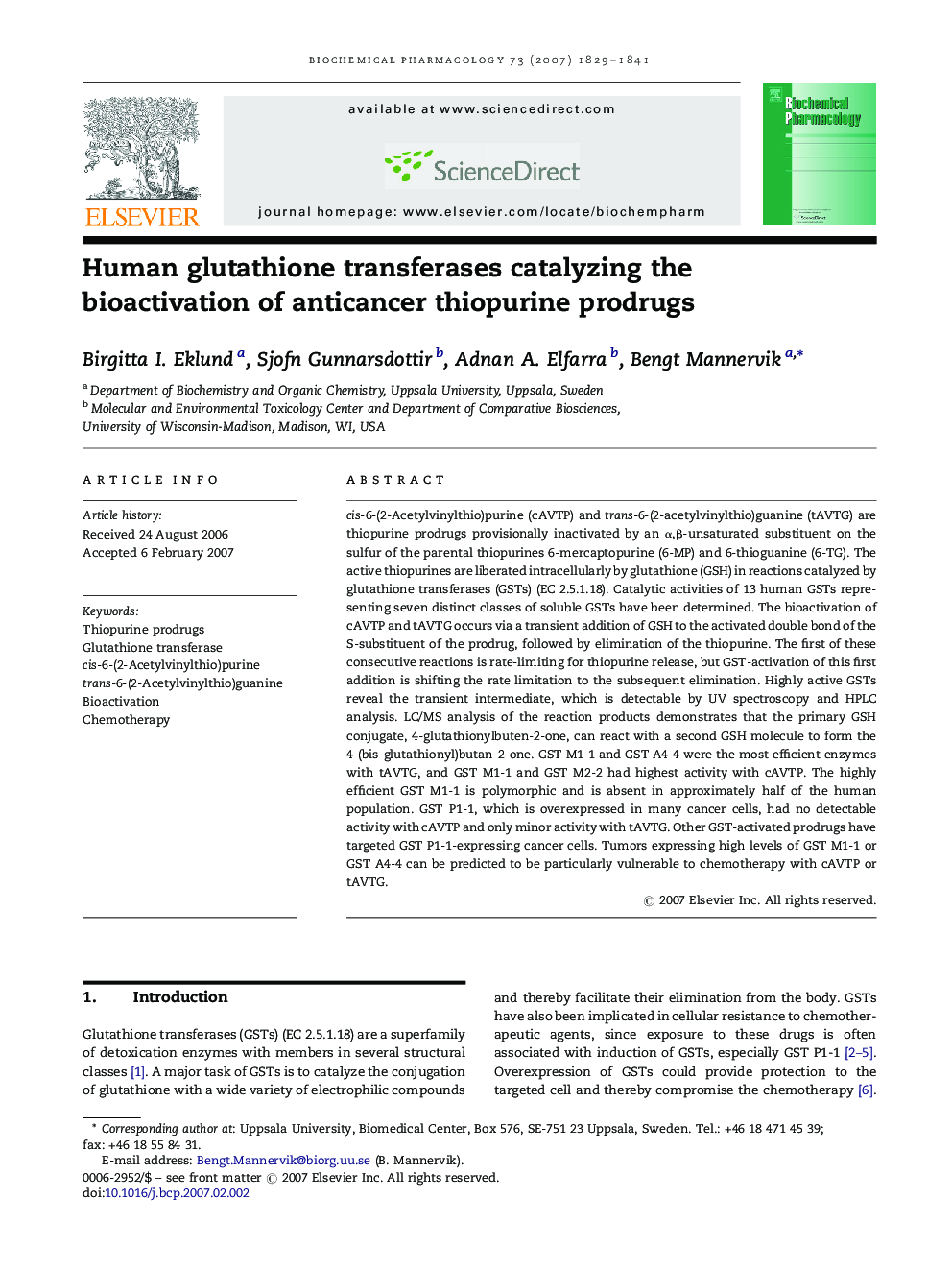| Article ID | Journal | Published Year | Pages | File Type |
|---|---|---|---|---|
| 2515611 | Biochemical Pharmacology | 2007 | 13 Pages |
cis-6-(2-Acetylvinylthio)purine (cAVTP) and trans-6-(2-acetylvinylthio)guanine (tAVTG) are thiopurine prodrugs provisionally inactivated by an α,β-unsaturated substituent on the sulfur of the parental thiopurines 6-mercaptopurine (6-MP) and 6-thioguanine (6-TG). The active thiopurines are liberated intracellularly by glutathione (GSH) in reactions catalyzed by glutathione transferases (GSTs) (EC 2.5.1.18). Catalytic activities of 13 human GSTs representing seven distinct classes of soluble GSTs have been determined. The bioactivation of cAVTP and tAVTG occurs via a transient addition of GSH to the activated double bond of the S-substituent of the prodrug, followed by elimination of the thiopurine. The first of these consecutive reactions is rate-limiting for thiopurine release, but GST-activation of this first addition is shifting the rate limitation to the subsequent elimination. Highly active GSTs reveal the transient intermediate, which is detectable by UV spectroscopy and HPLC analysis. LC/MS analysis of the reaction products demonstrates that the primary GSH conjugate, 4-glutathionylbuten-2-one, can react with a second GSH molecule to form the 4-(bis-glutathionyl)butan-2-one. GST M1-1 and GST A4-4 were the most efficient enzymes with tAVTG, and GST M1-1 and GST M2-2 had highest activity with cAVTP. The highly efficient GST M1-1 is polymorphic and is absent in approximately half of the human population. GST P1-1, which is overexpressed in many cancer cells, had no detectable activity with cAVTP and only minor activity with tAVTG. Other GST-activated prodrugs have targeted GST P1-1-expressing cancer cells. Tumors expressing high levels of GST M1-1 or GST A4-4 can be predicted to be particularly vulnerable to chemotherapy with cAVTP or tAVTG.
